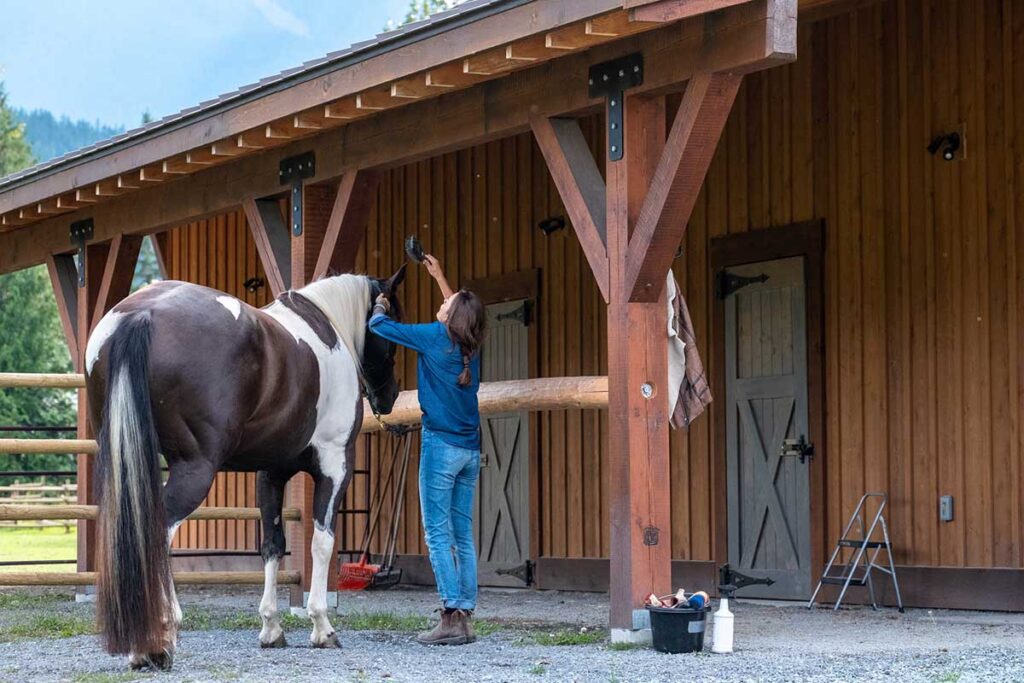Your tack deserves preventive care and maintenance just like your horse does. Dirty leather breaks down and can lead to catastrophic failures mid-ride. But how often should you really clean your tack? And what signs of wear should you watch for? To strike the right balance between not cleaning enough and cleaning all the time, here’s a practical guide to leather care and safety checks.
After Each Ride
Wipe strap goods and your saddle down with a damp sponge or cloth, removing dust and hair—no need to unbuckle and disassemble the bridle. If particular items have gotten wet with sweat, such as the underside of the girth or a breastplate, add a touch of saddle soap to the sponge or rag as you work; leaving salt on the leather will break it down over time. To finish, rinse the bit off by dunking it in a bucket.
Once a Month (or Twice if You Ride Every Day)

Take your tack apart to clean and condition it. Given that you don’t do this task very often, resolve to do it thoroughly, removing all dirt from the underside of straps and reaching into the corners of the saddle that no one is ever going to see. Scrub the bit well, working at stubborn gunk with a sponge, rag, or stiff toothbrush. When everything is clean, condition the leather and reassemble your tack, inspecting it for signs of wear and weakness as you do.
On an As-Needed Basis
If your gear gets muddy, wet, or develops mold, you won’t be able to put off cleaning horse tack. Any of these issues will cause leather to break down quickly, and they need to be addressed right away. When the leather is back in shape, you can resume your real-world tack-care schedule.
Perform a Tack Safety Check
Cleaning horse tack isn’t just about keeping up appearances—it’s a chance to do a tack safety check. Properly maintained equipment is safer for both horse and rider. Regularly cleaned and conditioned leather stays strong longer, and while you’re scrubbing you may notice the early signs of potential tack failure. These include:
- Stretched holes. Elongated buckle holes are a sign of weakening leather. The stretching can progress to tearing, which means that a bit or stirrups may suddenly drop inches with no warning. Of course, leather can also fail entirely in stretched areas. Using a different hole—if doing so doesn’t adversely affect fit—works in a pinch, but the entire length of leather is suspect. Replace it as soon as you can.
- Loose hardware. Give all buckles, Chicago screws, and hooks a solid wiggle as you clean. Any movement beyond the expected is cause for concern. Do not use tack with loose hardware; when it finally gives way, the results can be disastrous.
- Cracks in the leather. Old, dry leather will usually crack before tearing, so take any fissures in leather seriously. As you do your tack safety check, pay particular attention to points where metal meets leather because these areas tend to be under more stress and aren’t always cleaned and conditioned thoroughly. Once leather has cracked, it needs to be replaced.
This article originally ran on EQUUSMagazine.com.








